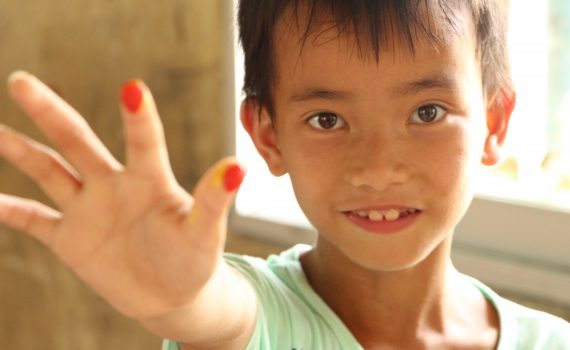People

Policy Address 20/21: A report not for our citizens": Hong Kong Pro-democrats criticise latest policy address
- 2020-11-25
- Society
- The Young Reporter
- By: Yanni ChowEdited by: Hong-shun Wong
- 2020-11-25
James To was in his office putting things away in boxes for removal while watching the live broadcast of policy address on television. On the screen is Carrie Lam, wearing the lapel pin of the Chinese and Hong Kong flag, standing in the chambers of the Legislative Council, giving her speech. The former lawmaker used to be sitting in the chambers, listening to the Chief Executive's annual address alongside many other colleagues from the opposition camp. Now, there are none of them left in the chambers. This is the first policy address ever given in the city's history without any pro-democratic lawmakers. "We used to protest in the chambers when there's [a] policy address, but right now, all the people left in the chambers are the puppets of the [the] Communist party," said Mr To, referring to the pro-Beijing lawmakers, who remained in the chambers. On November 12, the Democratic lawmakers resigned in solidarity with those who are disqualified by the government, with powers from the Beijing authorities, citing a threat to national security. That leaves the highest legislative body in the city with no dissenting voice for the first time. Claudia Mo, another lawmaker who resigned, criticised this year's address to be a report to integrate Hong Kong into the mainland, instead of having the city's best interest at heart. "The goal is to 'disappear' Hong Kong as we know it. I lost count of how many times she said Hong Kong enjoys Beijing's 'central support', like without which we just couldn't survive on," she said as she watched the address online, with no appetite for lunch. Wu Chi-wai, the chairman of the Democracy Party, said that the annual policy blueprint is more like a report from governors of provinces to the Beijing government. "You cannot find a word …

Resolving disability through faith-the story of Sa'diyya Nesar
- 2020-10-30
- Society
- The Young Reporter
- By: Shameel IbrahimEdited by: Jay Ganglani
- 2020-10-30
Sitting in a wheelchair, and spreading positivity, despite her adversities through her words and writings, a Pakistani woman talks about her struggles of being a woman with disabilities. One such personality is Ms Sa'diyya Nesar. She is a disabled woman, who wishes to empower people through her writing, speeches and community care initiatives. She has written a book called Strength from Within and was recently awarded the 2020 Social Justice Fellowship under the theme of 'disABILITIES and Empowerment: Less Assumptions, More Conversations' by the Resolve Foundation. Ms Nesar, born and raised in Hong Kong was diagnosed with myopathy, which results in weak muscles since birth. She uses a wheelchair and needs assistance when going out, when moving around at home and while laying down, where she has to use a breathing machine. According to the Hong Kong Monthly Digest of Statistics, there were 578,600 people with disabilities, as of December 2013. Among them, 320,500 persons said that they had disabilities which had a "restriction in body movement." In 2013, she graduated from the University of Hong Kong with a Bachelor's degree in English Language and Literature and later began to write for different news outlets about her struggle with disability. She refers to her struggle as a result of "attitudinal barriers"— which refers to stigmas associated with disability. Ms Nesar also believes that it is an assumption that people with physical disabilities mainly suffer from physical barriers. "It's usually assumed that the main challenge for those with disabilities in everyday life is their health or the physical barriers that we face. It's actually not. The main challenge lies in being judged or being treated differently. Being treated differently in a way that is derogatory instead of accommodating. There's a lack of inclusion and the alienation that can come from that. …

Somewhere over the rainbow - How an 8-year-old boy experience China's education gulf
- 2017-12-30
- Society
- The Young Reporter
- By: Caroline KwokEdited by: Cecilia Wong
- 2017-12-30
Every morning at 8:30, the muddy ocher-coloured cottage is blasted with young voices reading aloud textbook passages, so loud that it can be heard across the cement-levelled playground far from the school gate. There are three classrooms in the cottage with no lights but a rickety ceiling fan each. Drawings are repeatedly glued on and ripped off a section of the wall framed with red rice paper. On top, it wrote sloppily "In Celebration of the June First International Children's Day". This is where the eight-year-old Huang Wei-biao goes to school every day with his 22 young schoolmates, a village in the rural area of the East Guangxi province. The nearest town is 45 minutes of serpentine car ride away. One can tell Huang is a diligent student as he reads his textbook with his finger precisely pointing at each word when he pronounces it. One can tell Huang is an assiduous child as the veins of his neck appear every time he utters a word. One can tell Huang is an eager learner as each page of his textbook is torn and curled at the corners. Yet no matter how earnest or smart a student Huang is, he is just one the 13.8 million village primary students in China who are probably receiving education of lower quality than students who study in the urban parts of China. Village schools lack facilities and professionally trained teachers. Pupils do not have classes in other areas such as arts and physical education, let alone school outings. In comparison, the XinXing primary school in the same prefectural city has a multi-story building with a sports ground. There are more than 40 teachers and most of them have received tertiary education. Children's' parents can also find better working opportunities close by and not have …







